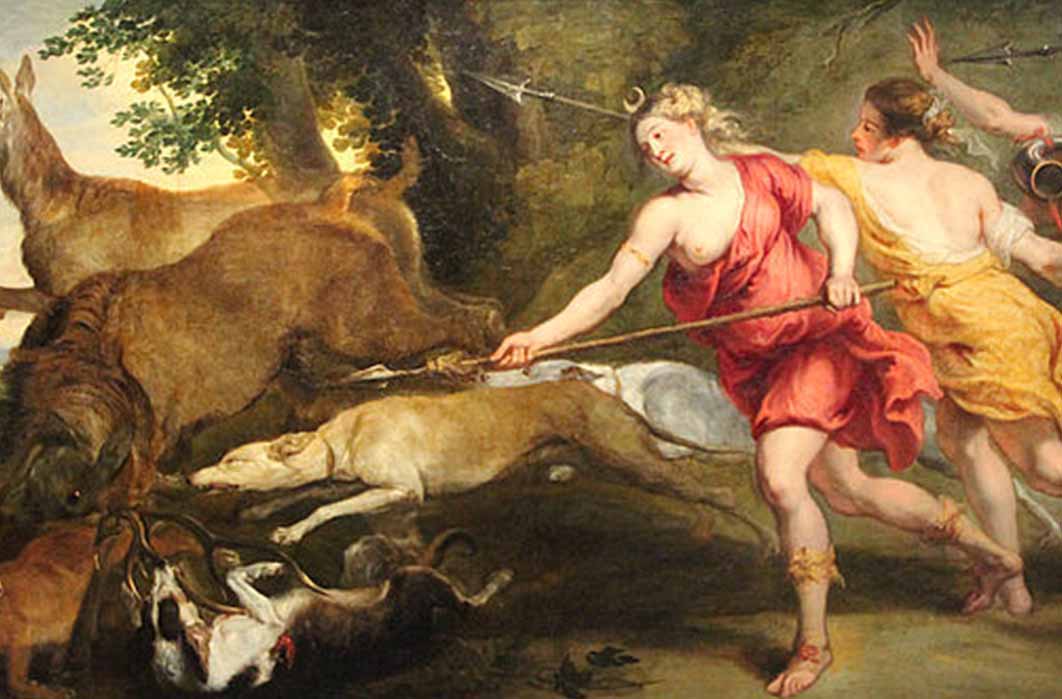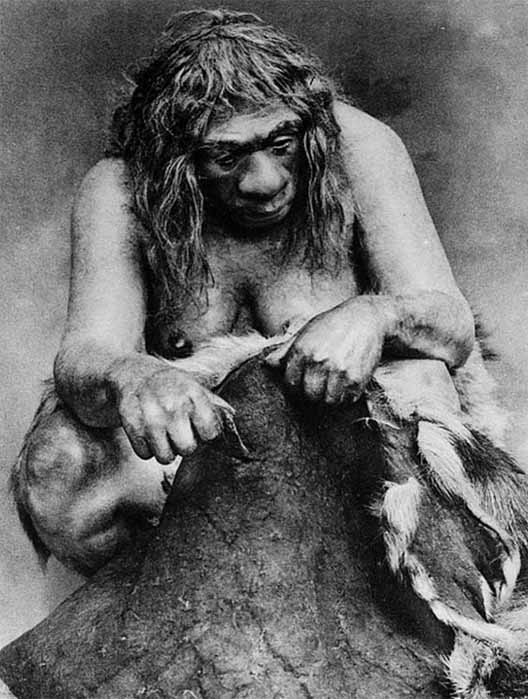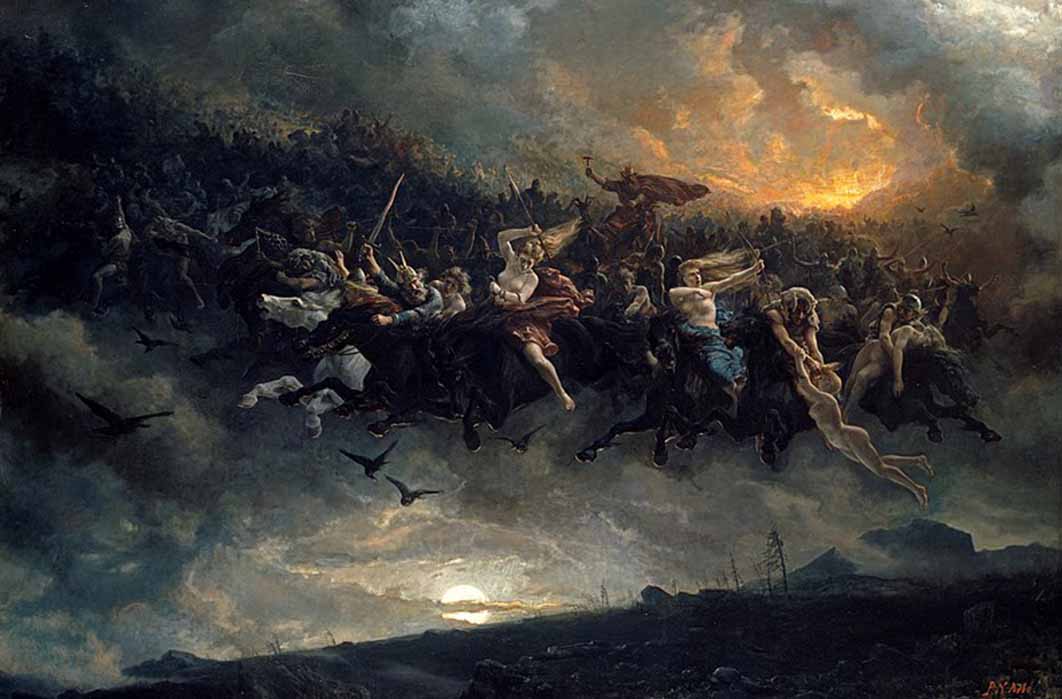
Goddesses Of The Hunt, The Moon, Child Birth And The Underworld
"Man the Hunter," an early 20th-century human origins story, saw hunting as the primary driver of human evolution, emphasizing mankind’s forefathers' bipedalism, large brains, sharp tools, and insatiable desire for violence. According to this narrative, hunting also gave rise to the concept of the nuclear family, with women serving as those who waited at home for men to bring home the meat. However, through decades of field research, anthropologists have developed a more flexible and comprehensive view of human labor, which holds that neither men nor women are particularly biologically inclined to gather.

Restoration of a Neanderthal woman cleaning a reindeer skin. ( Wikimedia Commons )
In 2018, archaeologists gathered around an excavated burial from 9,000 years ago in Peru's Andes Mountains. Along with a human adult's bones, they found an extensive kit of stone tools that an ancient hunter would require to take down big game, from engaging the hunt to preparing the hide, including a colorful array of 24 stone tools. Large rocks for cracking bones or stripping hides; small, rounded stony bits for scraping fat from pelts; tiny flakes with extra sharp edges that could have chopped the meat; and red ocher nodules that could have helped preserve the hides of animal bones, including those of ancient llamas and deer, were also discovered.
Initially, the team assumed that this was the grave of a great hunter and a prominent member of society. Further investigation revealed that the remains discovered alongside the toolkit belonged to a biological female. Furthermore, it is unlikely that this ancient female hunter was an outlier as, when the individual cases were examined as part of a more extensive data set, they discovered that of the 27 burials of individuals with known gender buried with hunting tools, 11 of them were female while 16 were male. Following this discovery, a review of previously studied burials of similar age across the Americas revealed that 30 to 50 percent of big game hunters may have been biologically female.
The Goddess Berchta, Leader Of The Wild Hunts
‘The Wild Hunt’ is first mentioned in the Anglo-Saxon Chronicles, one of the oldest sources of Anglo-Saxon history, in 1127 AD. The Wild Hunt is a folk myth in Central, Western, and Northern Europe, which depicts a ghostly leader with a band of hunters and hounds flying through the cold night sky with the howling wind. The supernatural hunters may be described as the dead, elves, or fairies. ‘The Wild Hunt’ was associated with significant winter storms or seasonal changes in Northern tradition. When author Hélène Adeline Guerber (1859 – 1929) wrote about Odin and his steed, Sleipnir, in her 1895-book, Myths of the Northern Lands, she tells her readers about the souls of the dead being carried away by the hunt's stormy winds.

Asgårdsreien, The Wild Hunt of Odin (1872) by Peter Nicolai Arbo (Public Domain)
The concept of the souls of the dead being carried away in the Wild Hunt was popularized in 1835 by author and mythologist Jacob Grimm (1785 – 1863) in his book Deutsche Mythologie, in which he combined folklore with textual evidence from the Middle Ages to the Early Modern period in his interpretation of the story. He believed the myth had pre-Christian origins and that its leader was based on the darker aspects of Odin's legends. He also suspected the hunt's leader was a woman, possibly the Germanic heathen goddess Berchta.
The figure of Berchta, a once-popular Germanic goddess, lives on in German, Swiss, and Austrian folklore. Before the rise of the Church, Grimm describes Berchta's cult as being centered in Southern Germany near the Black Forest, spreading through the Swiss Alps, Austria, the Czech Republic, Slovakia, France, and Northern Italy. A well-loved goddess who protected babies, children, and women, Grimm depicted Berchta as a guide to the Afterlife, caring especially for the souls of babies and children just as a mother would. In Berchta's stories, a grieving mother sees her recently deceased son among a group of children along a hillside. The children are following a motherly woman dressed in a white gown. The boy breaks away to speak to his distraught mother. He holds up a bucket of water which he claims is his mother's tears, before he tells her not to cry for him because he is safe and sound under the watchful eye of the White Lady, Berchta. Berchta wears a belt equipped with three golden keys because she is associated with the circle of life, death, and rebirth. She wore a long, white gown, and her lengthy, black hair was braided on the sides of her head. In later tales, Berchta appears as a crone, an older woman in a disheveled dress.




